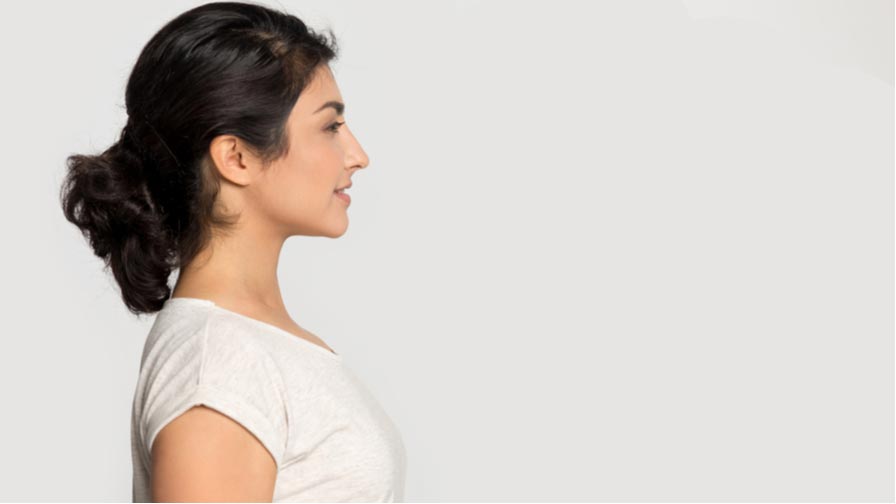Hysteroscopy Overview
During a hysteroscopy, the patient lies on her back with her legs wide open. The gynecologist then gently inserts a hysteroscope, a thin tube with a light on the end into the vagina. The hysteroscope goes inside through the birth canal. The gynecologist will be able to look into the cervix and inside the uterus. If the gynecologist diagnosis anything abnormal, she may take a sample and send it for further tests later.
The most common reason for a woman to undergo hysteroscopy is abnormally longer or heavier menstrual cycle, or bleeding even when the female is not having her periods.

Other reasons for which a woman may need a Hysteroscopy are:
Abnormal Pap test results
Bleeding after menopause.
Fibroids, polyps, or scarring in the uterus.
The female has previously had one or more more miscarriage or is having problems getting pregnant.
The doctor requires a small tissue sample for biopsy of the endometrium, the inner lining of the uterus.
The female has to undergo a sterilization procedure as a permanent method of birth control.
The female’s IUD has come out of place and needs to be checked.
Types of Hysteroscopy
What is Diagnostic Hysteroscopy?
What is Therapeutic Hysteroscopy?
Therapeutic hysteroscopy is carried out to treat an abnormal condition detected during the diagnostic hysteroscopy. If the doctor detects an abnormal condition at the time of the diagnostic hysteroscopy, a therapeutic hysteroscopy can be done at the same time. This saves the patient’s time and also there is no need to go through another surgery. During the therapeutic hysteroscopy, the doctor will insert small surgical instruments through the hysteroscope. These instruments are used to treat the abnormality or condition.
Procedure
Dilation and curation are required in case a female has abnormal uterine bleeding. This procedure is performed to diagnose or treat the abnormality in the uterus. The D&C can be performed for two purposes:
Diagnostic
A procedure known as D&C is often carried out adjacent to hysteroscopy. A type of D&C called Endometrial D&C is performed in order to diagnose the condition of the patient in cases mentioned below:
- If the female has AUB
- If the female is having bleeding after menopause
- If the doctor or gynecologist has noticed abnormal cells in the endometrium (inner lining of the uterus) during examination or tests for Cervical Cancer.
To perform this test, the doctor first has to collect tissue samples from the inner lining of the uterus. The doctor will then send the tissue samples to the lab for testing the following conditions:
- Uterine Polyps
- Uterine Cancer
- Endometrial Hyperplasia
Therapeutic
During therapeutic D&C, the doctor has to remove the contents from the inner lining of the uterus. The doctor may also need to clear out the tissues that have remained in the uterus after an abortion, miscarriage in order to prevent heavy bleeding. D&C may also be performed to remove a molar pregnancy. In this case, a tumor is formed in the uterus instead of a normal pregnancy. It needs to be removed with the D&C procedure. The doctor also performs D&C to clear the placenta that may have remained in the uterus and is causing heavy bleeding. The removal of cervical or uterine polyps ( generally non-cancerous ones ) can also require the D&C procedure.
For certain medical cases, the doctor may require to perform D&C along with a Hysteroscopy. In the procedure of hysteroscopy, the doctor inserts a thin, fine hysteroscope with a camera on its head inside the vagina, to the uterus. The doctor can then see and examine the inner lining of the uterus on the screen. This is performed to look for any abnormalities or polyps inside the uterus.
Complications
The complications involved with hysteroscopy are extremely low. But, it is still suggested to discuss with your doctor about any possible risks and complications before the procedure is performed. Recovery from a hysteroscopy is simple, quick and not complicated, and there are generally no lasting effects. The female may only have mild cramping or discomfort for the first couple of days after the procedure.
Benefits of hysteroscopy
Short hospital stay
Short recovery time
Fewer painkillers needed after surgery
An alternate of hysterectomy
Possibly avoids the need for open abdominal surgery
Bottom Line
Our Clinical Footprint

30000+
Happy Patients
10000+
Surgeries
100+
Doctors
70+
Clinics
20+
Cities
200+
Hospitals
Our Clinical Footprint

30000+
Happy Patients
10000+
Surgeries
100+
Doctors
70+
Clinics
20+
Cities
200+
Hospitals